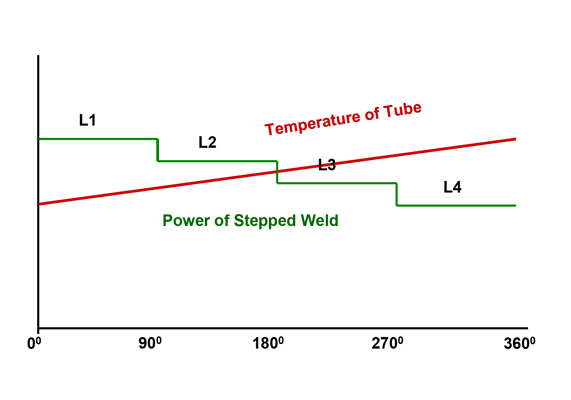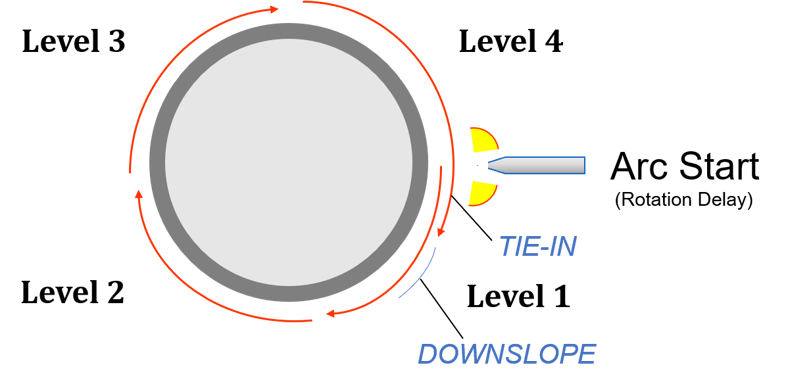
Orbital welding is a semi-automated process, but what does that entail? For those new to the orbital welding world – here we lay out the orbital welding process step-by-step.
Getting a better understanding of the orbital welding process can help you determine whether an orbital welding machine might be a good fit for your next project. Read more to find out what the orbital welding process looks like.
Note: The orbital tube welding process is slightly different than the orbital pipe welding process. Check out our blog explaining the differences between tube and pipe to determine which one you are working with.
Don't have time for the full article? Watch our introductory orbital welding video:
1. Cut
Before aligning tube or pipe ends, they first need to be cut to length. Orbital saws are commonly used on sanitary tubing and thin-walled pipe. Orbital cutters rotate 360 degrees around the tube or pipe to create a clean and accurate cut. They can be adjusted to fit a range of sizes without deformation. Cuts can be made in around 20 seconds.
Also, tube saw blocks and pipe saw blocks can be used to guide a traditional saw such as a recipro. The blocks securely clamp the tube or pipes to create a square cut.
For larger applications - typically with pipe - a clamshell can be used.
2. Face or Bevel
After cutting, use a tube facing tool to get rid of burrs and other imperfections. This is important later for the fit-up.
If adding wire on a heavy-walled application, you'll need to prepare the tube or pipe with a bevel. For a wire-added orbital weld, we suggest a J-bevel. The right pipe beveling tools will bevel, face, and counterbore simultaneously.
3. Clean
This step is important, especially if sanitary welding stainless steel. Cleaning gets rid of potential contaminants such as oil and grease and puts you in the best position for a successful weld. Use gloves and an alcohol spray with a dry cloth to remove surface impurities.
4. Insert Consumables - Tungsten and Wire
To strike an arc, you'll need an electrode. Here, it will be 2% ceriated tungsten. Keep in mind that tungsten for hand welding and orbital welding will differ. To achieve a repeatable weld, the tungsten will need to be manufactured consistently and to fit the application specifications - such as the weld head being used and the tube or pipe's O.D.
To learn more about tungsten, download our orbital tungsten handbook. Once you have the right tungsten, place it within the weld head's tungsten holder.
If you are performing an orbital pipe weld with wire added, you will need to add filler wire to your open weld head. In most applications, the welding specifications will give note the material type to be added. Check your local welding supply house for wire options.
5. Align
The fit-up is extremely important when it comes to the penetration of the weld. Align the joint of the two pieces with the tungsten electrode.
Tube tacking clamps can also be used to align sanitary tube and pipe applications. These simplify the alignment step and are an easy way to ensure the fit-up.
For applications with a greater wall thickness, counterboring helps the landing fit-up by removing material from the I.D.
6. Purge
After aligning, purge oxygen from the inside of the tube or pipe, using argon or mixed shielding gas. This prevents sugaring on the backside of your weld and helps keep the weld from becoming concave. If sugaring does occur, it can be very problematic for many industries – particularly the process piping industry – where bacteria can grow in these conditions.
For tube applications:
- Purge plugs can remove oxygen while evenly dispersing the gas mixture
- In a less critical application, tape and an argon gas line can be used
For pipe applications:
- Purge bladders are used with large O.D. pipe or when there are elbows or tees that need to be purged.
- Nylong expansion plugs are a good tool for purging smaller O.D. pipe.
MIT has both I.D. and O.D. mounting purge options are available to meet any application needs.
7. Program
Today’s power supplies feature auto-programming technology. It is as simple as entering the weld head being used, material being welded, O.D. size, and wall thickness into the power supply. The power supply will then generate a pre-developed program. Often, very little adjustment will be needed to produce an accurate weld program.
The weld itself is typically broken into 4 or more welding levels/sections and welded in a step or continuous motion. The initial levels will need more heat (higher amperage) while the later levels need less (lower amperage) to prevent the piece from becoming overheated.

To fully understand programming needs, schedule orbital welding training. You will get in-depth details and hands-on experience while learning from an orbital welding expert.
8. Weld
When you have all these steps completed and the program ready, you're ready to strike an arc. Once the start button is pressed, the program will initiate. It follows this automated process:

Pre-Purge
First, the pre-purge will run for the designated amount of time.
Travel Delay
During the travel delay, also known as the rotation delay, the tungsten stays in place while the weld puddle is established. This will help establish an arc and achieve the desired penetration.
For thick-walled pipe or tube, you may have a longer travel delay due to the thickness of the base material. After you establish a puddle you will add wire before the electrode travels.
Pulsing
The electrode will travel around the workpiece while pulsing in both primary (high) pulse and background (low) pulse. These pulse amperages and times within the welding program will determine your weld bead overlap. The travel speed will be determined by the program and the amperage will also change with the level position.

Tie-In and Downslope
After the electrode travels 360 degrees back to the starting position, it will then continue for another 10 degrees to "tie-in" or overlap the weld.
Then the downslope will begin, this is when the head will slowly bring the amps down giving the weld puddle a teardrop or dovetail effect. This closes the puddle and prevents any deviations or weld defects at the end of the weld. Most downslopes are somewhere between 4-12 seconds depending on the OD of the tube/pipe.
Post-Purge
Once the downslope is complete, the arc shuts off and the head purges gas for 15-30 seconds. This helps with the color and cooling process of the metal. Then, the weld is considered complete.
After conducting an initial test weld, the program can be modified to best suit any needs in your application.
See if orbital welding could be a good fit for your next project by contacting the experts - Contact Us
Tags:
Welding Program, Orbital Pipe Welding, Auto Programming, Sanitary Welding, Orbital Tube Welding, Orbital Welder, Orbital Welding, Orbital Welding ProcessFeb 9, 2022 8:46:08 AM


.png?width=520&height=294&name=Blog%20Featured%20Image%20(3).png)
.png)
Comments